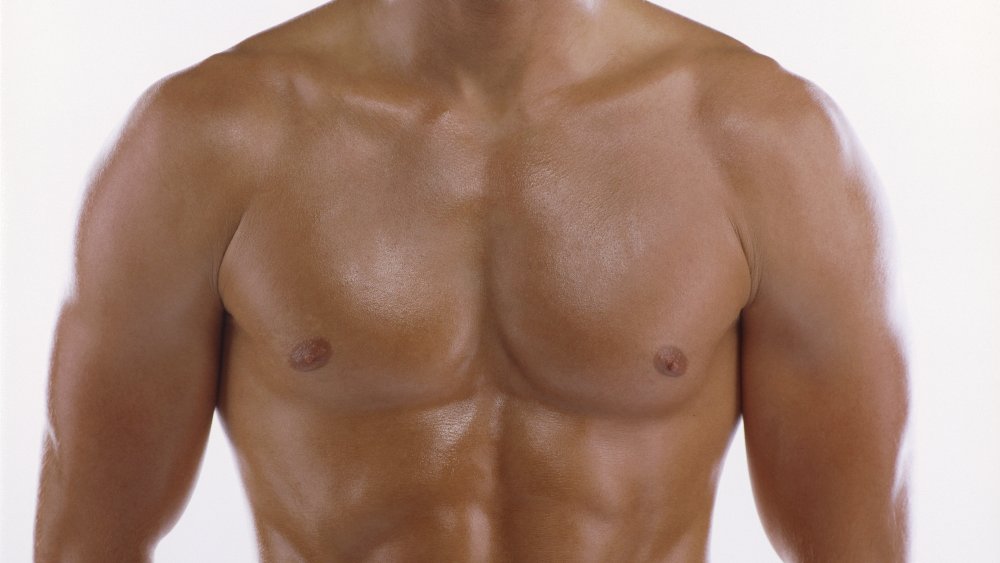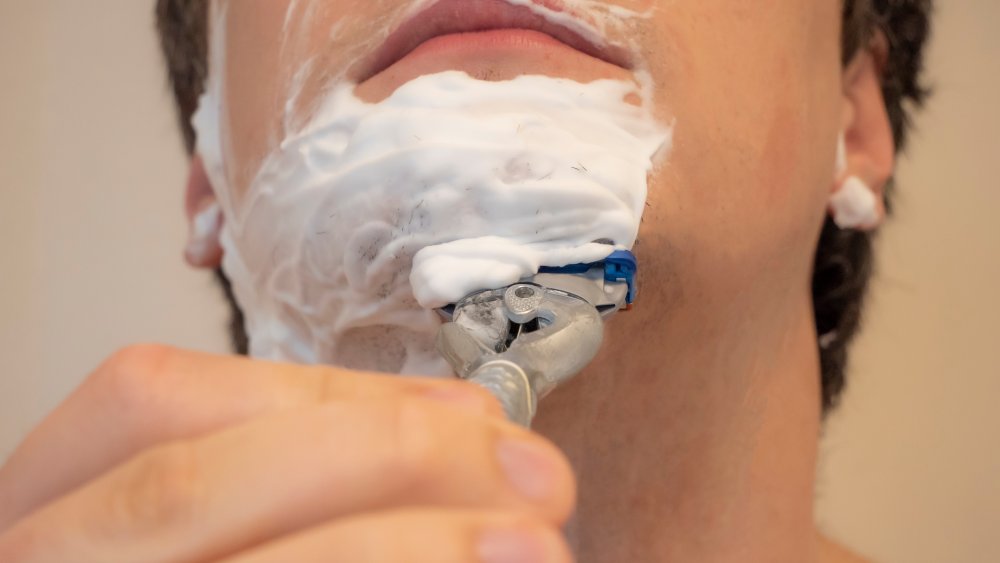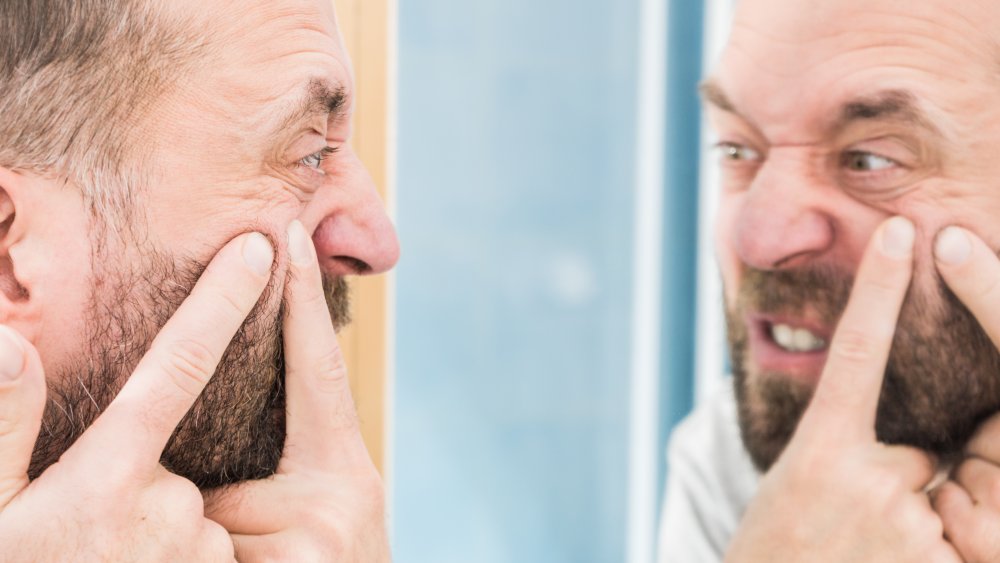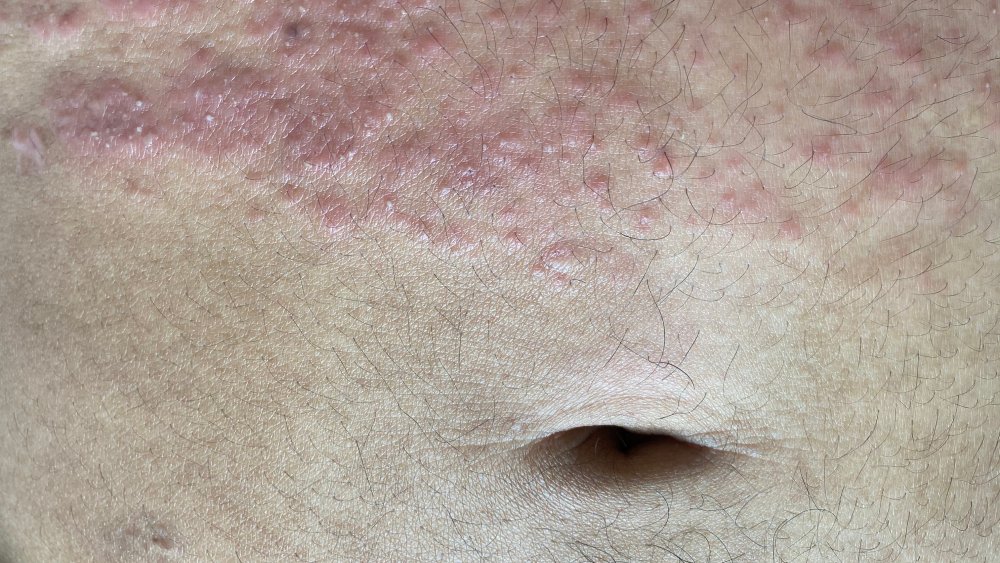Scientifically Proven Side Effects A Man Gets Waxing Their Chest
Those among us who are verbally gifted wax poetic. The moon waxes and wanes. There's probably someone somewhere who still waxes furniture (though that someone is probably getting paid minimum wage to do it). Let's not forget ear wax and, of course, Madame Tussaud's Wax Museums.
Wax candles, once commonly made of beeswax, light a room or set a mood or set fire to a nostalgically and hazardously decorated Christmas tree. Beeswax is amazing stuff. It's used as the base material for products that allegedly replace clingy plastic wrap. It's produced by honeybees to form the combs where both honey and life are stored in the hive.
It's also great for making you look less like a werewolf. But if you're hoping for scientifically proven powers of seduction and masculinity by way of wax — don't hold your breath. The pros are pretty short, and the potential side effects are more about what could go wrong. But first, the history.
Hair, there, and everywhere
Some sources date the practice back to the ancient Egyptians, well over 3,000 years ago. The Romans were guilty, too. The practice seems to disappear and reappear (kind of like the hair itself, actually) cyclically throughout human history. Depending on the times, social mores dictate that various body parts should have hair. Or less.
Women have endured body waxing for years. The beauty regimen is offered abundantly in today's society; you can even make a solution yourself which does not itself include the use of beeswax. Which seems like it's cheating, somehow.
Many commercial compounds use a mixture of beeswax and some sort of resin, along with perhaps soothing or scented agents to try to make a product which, at its roots, grabs hair and yanks it out of the skin. Ow.
On the plus side, if you breathe your last breath shortly after a treatment, the hair won't continue to grow after you've died. Feel better?
Watch out for pimples
So what about the trend of waxing men's chest hair? While fads may come and go, that hair's coming back, baby, and you're to go through this all over again. Why would someone go through the pain?
Like any other body part, waxing a chest means removing the hairs thereupon in a somewhat violent fashion. No nubs, no stubs; out by the roots in one fell swoop. Commonly, a compound is warmed, applied to the area to be denuded, allowed to harden, and then removed, taking with it the unwanted hair. And whether it's a chest or a leg or an eyebrow or –- somewhere else –- there are consequences to trying to foil Mother Nature.
The process shares downsides with a more common form of shaving, without the potential of cutting yourself, which is a plus. You're also likely to remain hair-free for longer. However, there's probably going to be redness and irritation in its wake, so applying an antiseptic cream afterwards is not a half-bad idea. Even so, there are risks of infection.
Assuming things go smoothly, you are in for at least one scientifically proven positive effect. A study published in the Wiley Journal of Cosmetic Dermatology found that waxing will reduce your body odor for up to 24 hours, compared to trimming. But so does shaving, so it's kind of a wash.
Don't be rash
If things do go up in flames, infection can take several forms. Folliculitis is certainly not much fun. The Mayo Clinic describes it as "a common skin condition in which the hair follicles become inflamed." Left untreated, they tell us, the condition can turn into "nonhealing, crusty sores." (If you're reading this while eating breakfast, we apologize.)
There's also a risk of "was it supposed to remove the skin too?"-itis, as well as plain, old, garden-variety pimples. Zoinks! Also ingrown hairs. Fish gotta swim, birds gotta fly, hair's gonna grow back, no matter what you try.
There is also the possibility of an allergic reaction to whatever is being used to yank those bristly yes-you-went-through-puberty souvenirs up and out. The more complicated the chemical makeup of the compound being used, the greater the possibility of the immune system tossing a flag on the play. Maybe test on a small area first. Just in case. Who wants to have the conversation with the EMT who asks, "What do you think is causing this? Peanuts?" "Well, no, actually..."
Is waxing worth it?
Bee waxing? Be warned. Standards of beauty shift and change like the dunes of the Sahara, and one man's waxed rash could be another man's hairy treasure. At the end of the day, unless you're a professional swimmer or model, waxing is more or less a matter of personal preference.
Consider Burt Reynolds, who in all his hirsute glory basked for decades in an aura of unwaning, unwaxed masculinity. Not everyone is blessed with a built-in mosquito net on their chest, so if you've got it, you might as well flaunt it.




